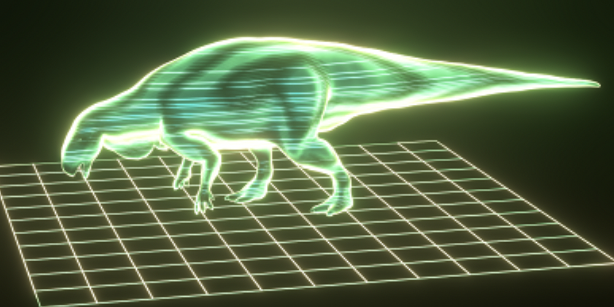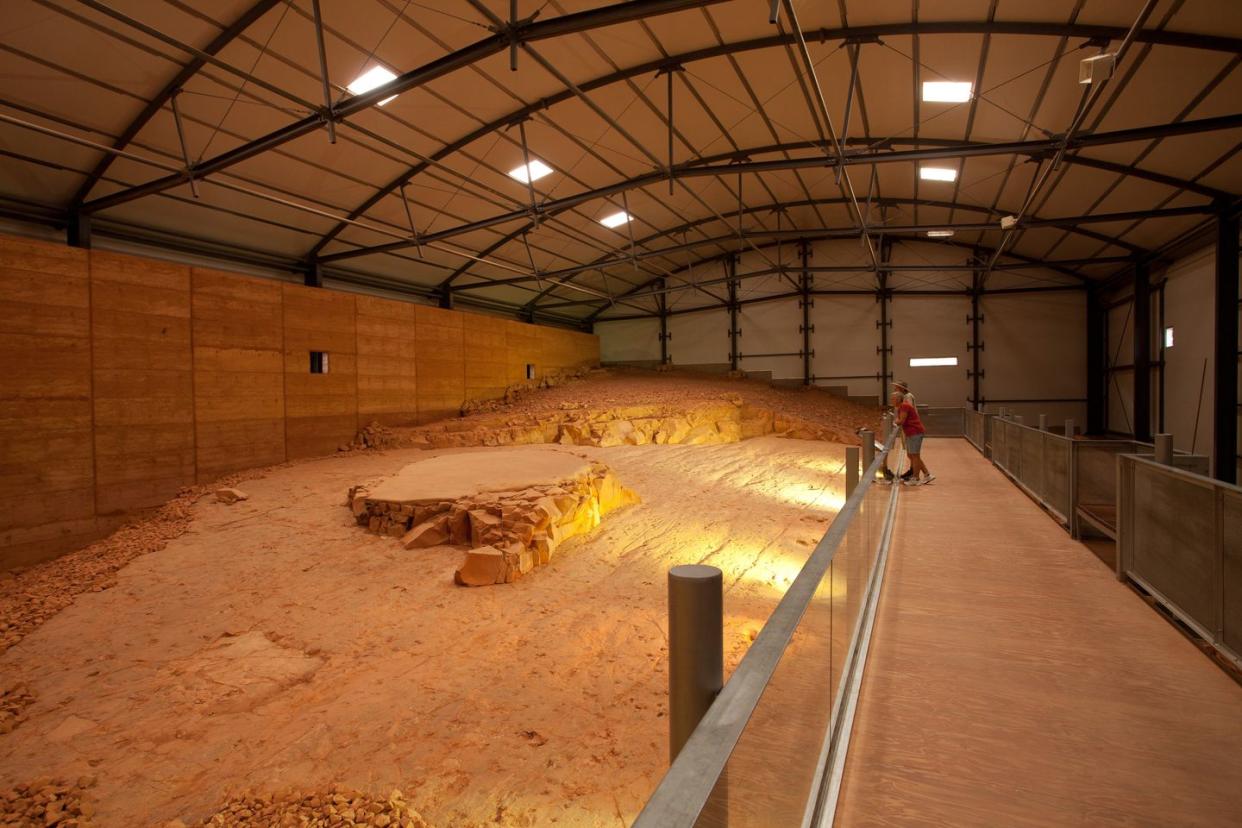This AI Identified Dino Tracks From Australia’s ‘Jurassic Park’ When Humans Couldn’t

"Hearst Magazines and Yahoo may earn commission or revenue on some items through the links below."
Scientists employed AI to identify the dinos behind 3,300 preserved tracks at a paleontological site in Queensland, Australia.
Human paleontologists could correctly identify known dinosaur footprints 75 percent of the time, while the AI hit 90-percent accuracy.
Confident with the AI’s abilities, the researchers let the machine analyze the mystery footprints, landing on the Ornithischians.
Ninety-three million years ago, dinosaurs still roamed Earth, Australia still clung to Antarctica as part of the ancient supercontinent Gondwana, and a very small Cretaceous drama unfolded in the northeast corner of the Land Down Under. Located in modern-day Queensland, Australia, near the city of Winton is Lark Quarry Dinosaur Trackways, a remarkable paleontological discovery containing some 3,300 preserved dino tracks. Today, it’s known as Australia’s “Jurassic Park.”
For years, scientists have guessed at the meaning behind this one-of-a-kind discovery. Was this evidence of a rare dinosaur stampede fleeing a T. rex-like theropod, or was this simply a popular stream crossing? This question is further complicated by the fact that the tridactyl (three-toed) footprints of plant-eating ornithischians and theropod predators can be remarkably similar.
🦖 Science is on our side. We’ll help you make sense of it all—join Pop Mech Pro.
To help shed some light on the question (and take some human subjectivity out of the equation), University of Queensland paleontologist Anthony Romilio recruited artificial intelligence to help scientists decipher these ancient tracks. Thanks to the AI’s help, Romilio and his team confirmed that the footprints—originally thought to belong to the theropods—actually belong to the more docile, plant-eating ornithischians. The researchers published their results this week in the journal Royal Society Interface.
To get the tech ready for the footprint-tracking big time, Romilio and his team trained an AI program called Deep Convolutional Neural Networks, which uses artificial neural networks to analyze large swaths of data via machine learning. The researchers then fed the AI upward of 1,500 dinosaur footprints related to theropods and ornithischians—the two dinosaurs associated with the 93-million-year-old conundrum. The AI then combined features to help determine categories and could “possibly find ways to distinguish these categories that humans haven’t thought about yet,” co-author Jens Lallensack told The Royal Society.
Then, 36 new tracks were given to both the AI and human researchers. While Romilio could only identify tracks with up to 75 percent accuracy, the AI was able to correctly identify footprints 90 percent of the time, according to Cosmos. Once they could trust the AI’s accuracy, they then let the machine analyze the mystery footprints at Lark Quarry.
The conclusion? The tracks belong to the Ornithischians, a group of dinos dating back to the Jurassic Period. That includes the likes of duck-billed hadrosaurs, horned Ceratopsia, and armored Stegosauria, according to the University of California Museum of Paleontology.
This study is the first time AI has been used to analyze dino tracks and is the latest step in Romilio’s now 12-year-long quest to recast the drama that unfolded near Winton. It’s a tough task considering Lark Quarry Dinosaur Trackways goes by another name—Dinosaur Stampede National Monument.

In 2010, Romilio began exploring a theory that these particular tracks weren’t from a stampede at all, but remnants from a well-traveled stream crossing. The idea incensed some of Romilio’s colleagues at the time, who called him an “iconoclast” who had somehow fabricated his data. Since then, Romilio has written the book on visualizing dinosaur tracks (no, like he literally wrote a book about it), and training AI to identify footprints could be the next big step in unraveling these Cretaceous mysteries.
“A track is the result of multiple factors, including the anatomy of the foot, the consistency of the substrate, the movements of the animal that made the track, and alteration of the track that occurred after it was formed,” Lallensack told The Royal Society. “To go further, we need powerful quantitative methods rather than human intuition, and neural networks may be a real game changer.”
It may take this growing technology of the future to explore the intimate mysteries of the past.
You Might Also Like
